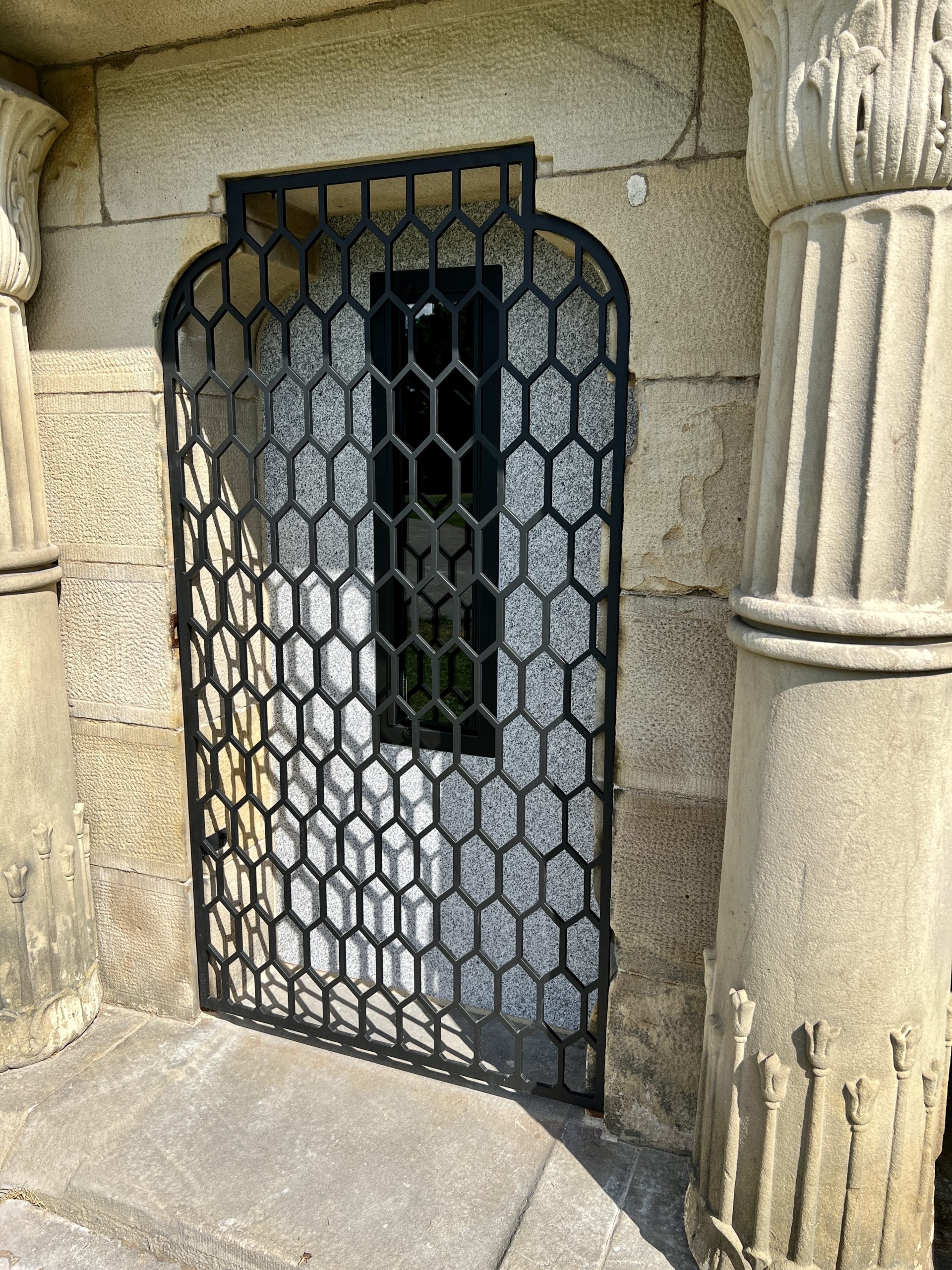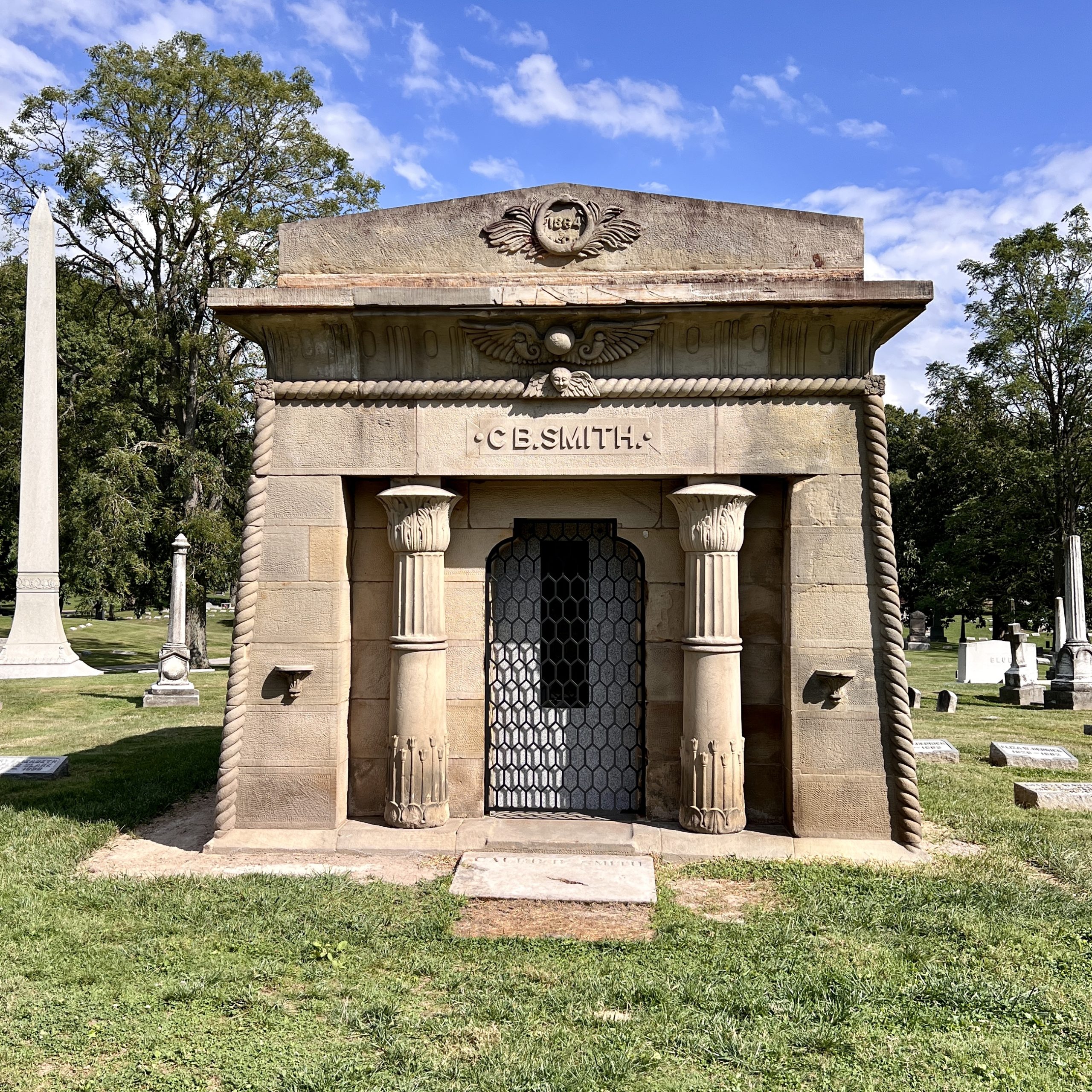The Crown Series – September 2022
Crown Hill Cemetery was founded in 1863 as part of the American Rural Cemetery movement that provided the inspiration for the nation’s first public parks.
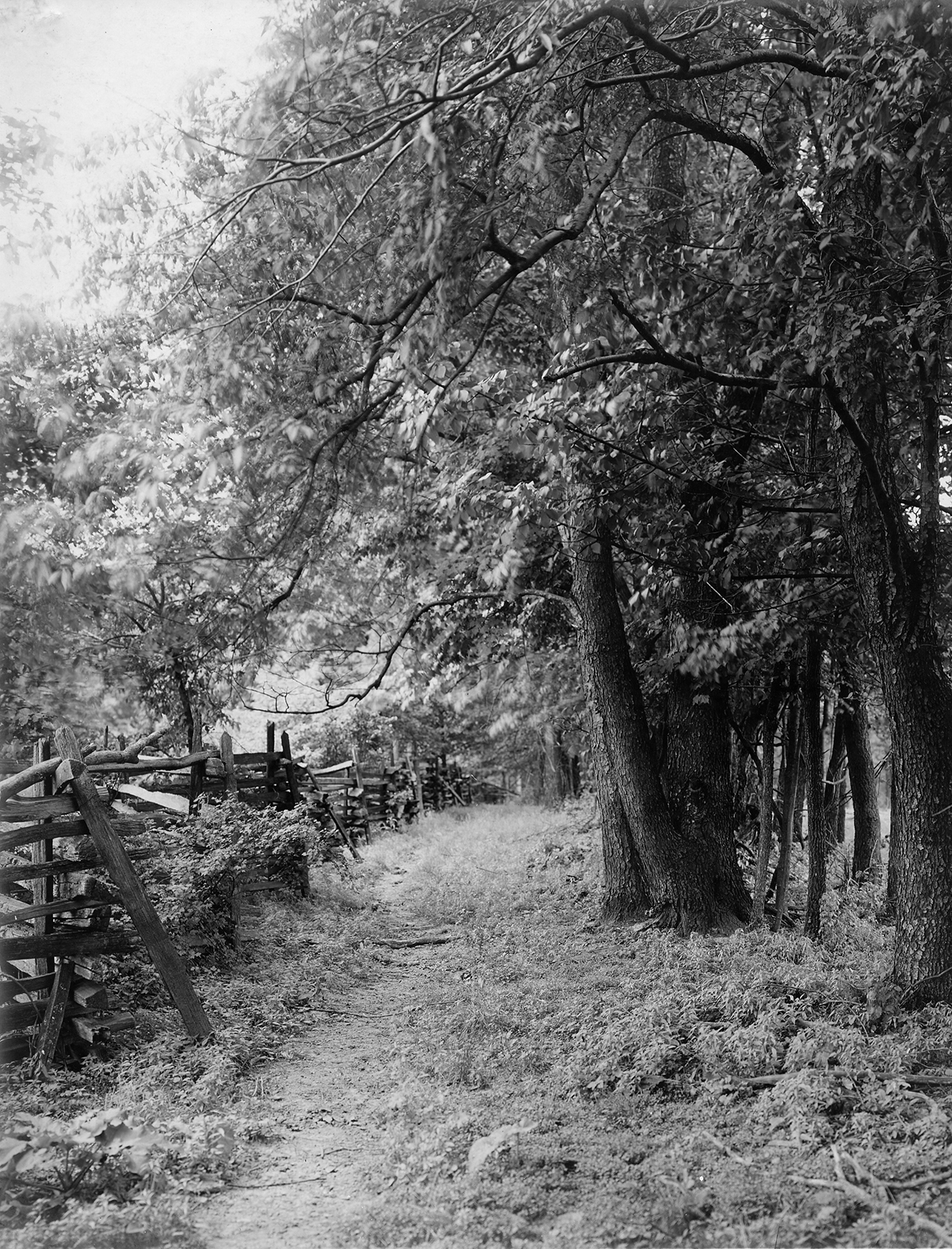
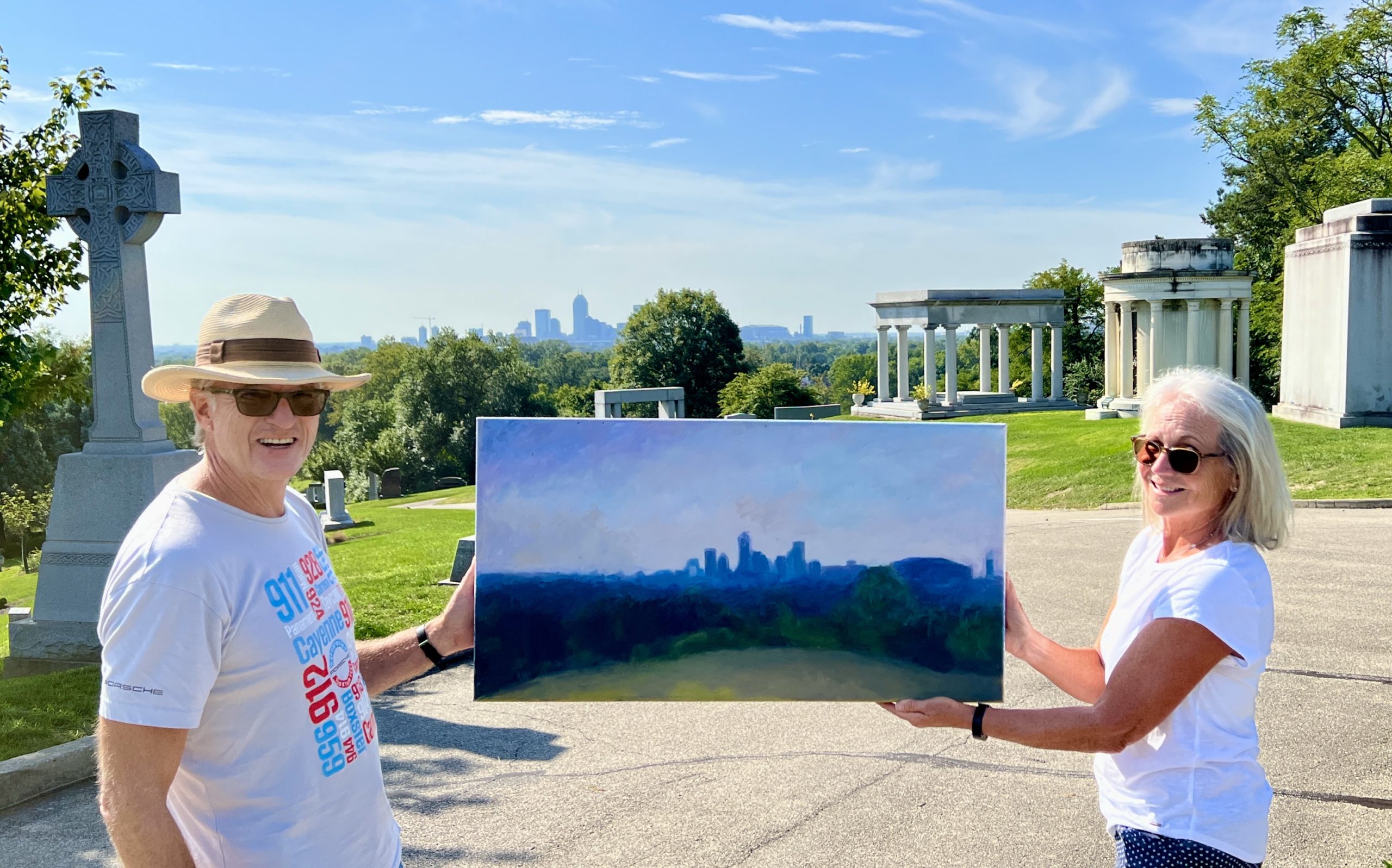
Crown Hill’s natural story began around 20,000 years earlier, when a melting glacier created a “kame,” a steep-sided mound of sand and gravel (hill) that became known as “The Crown.” It rises to 842 feet above sea level and 60 feet above its fairly flat surroundings. In the early 1860s, Martin Williams owned the land which included this hill, a farm, a tree nursery and his cabin near the base of the hill.
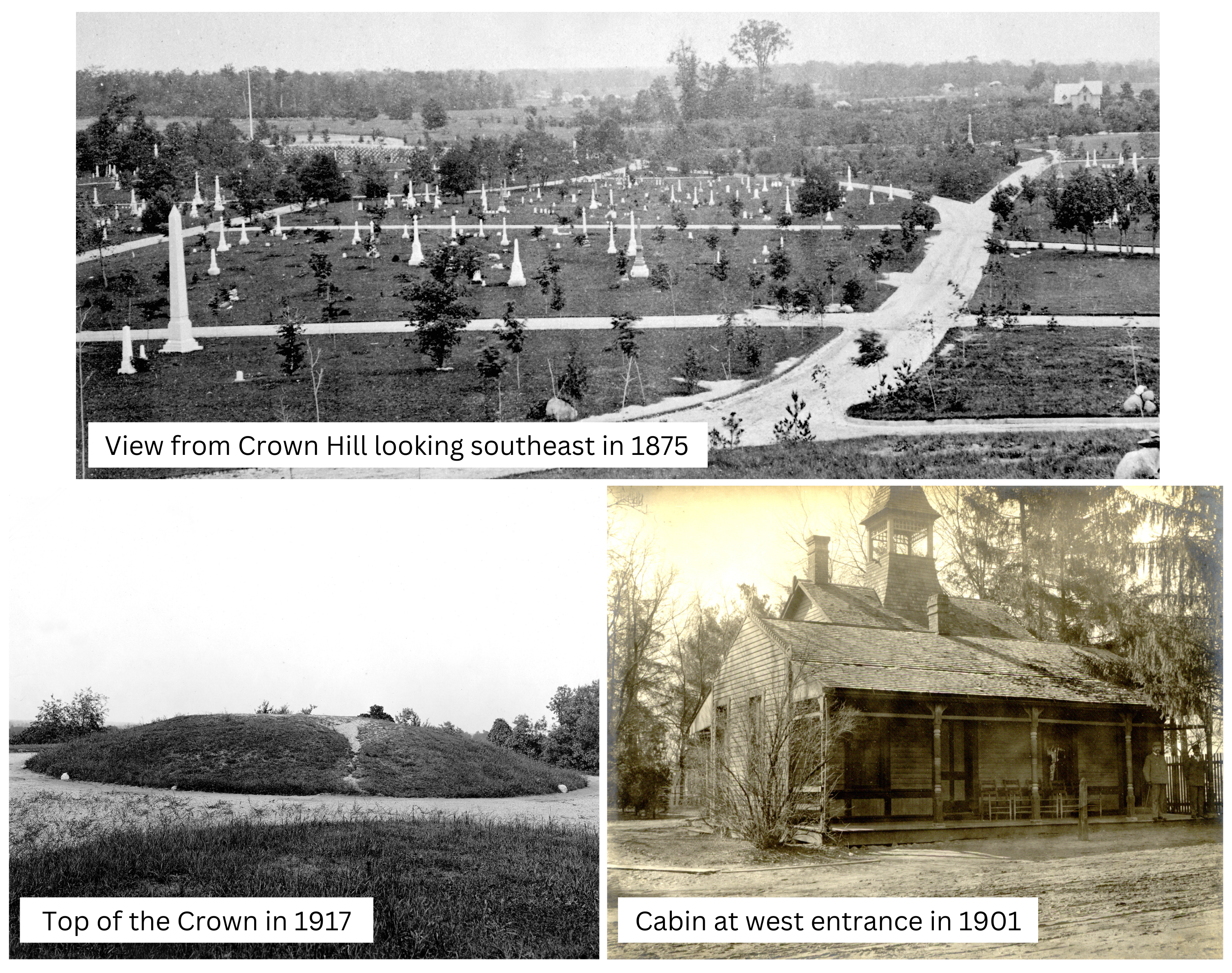
Indianapolis residents, who lived several miles away, would sometimes ride out to the hill for the view and perhaps to picnic and eat wild strawberries that grew there, giving it the name of “Strawberry Hill” in some accounts. The Crown has also been known as “Dorsey’s Knob,” “Mount McCormack” and “Williams Hill,” after its various owners.
In the summer of 1863, James Ray, an Indianapolis pioneer and civic leader, began pursuing the idea of establishing a Rural Cemetery, the landscaped, park-like cemeteries that became popular in the United States and Europe in the mid-19th century. They were typically built several miles out into the countryside and featured statues and memorials depicting angels and botanical motifs. Ray wanted the new cemetery to take the place of the original City Cemetery, later known as Greenlawn, which was surrounded by railroads and industry and located just outside the southwest corner of Indianapolis’ mile square.
Ray gathered with like-minded city leaders to find the appropriate property for this development. They hired John Chislett, an architect and Superintendent of Alleghany Cemetery in Pittsburgh, as a consultant, and on September 12, 1863, it was unanimously agreed that it was expedient to select suitable grounds within five miles of Indianapolis for a Rural Cemetery of up to 320 acres. In the 1875 book, The Origin, Organization and Management of Crown Hill, James Ray states that on September 15, 1863: “After fruitless searching over miles of level land north of the city, as soon as the nursery hill of Martin Williams caught Chislett’s eye, he at once said to his companions, ‘THAT IS THE SPOT — BUY THOSE GROUNDS AT WHATEVER PRICE YOU HAVE TO PAY.’” Within a week, multiple landowners agreed to sell 240 acres for $50,500.
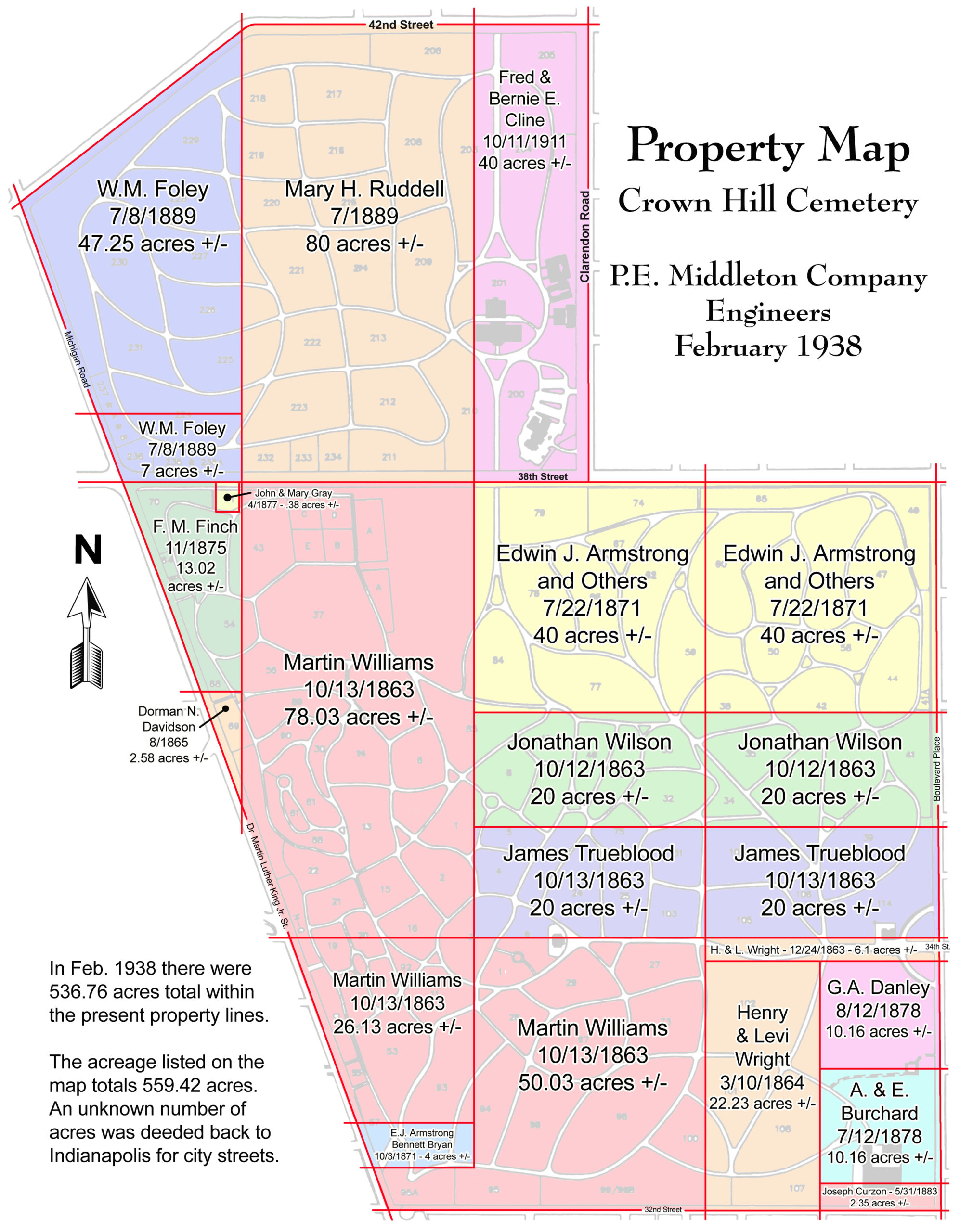
On September 25, 1863, 30 city leaders signed an agreement to incorporate as Crown Hill Cemetery and additional acres were added through 1911.

On October 17, 1863, Frederick Chislett, John Chislett’s son, was hired to become the cemetery’s first superintendent, a post he would hold until his death on November 11, 1899, when he was succeeded by his son, also named John.

Frederick and his family moved into Williams’ cabin on a warm rainy New Year’s Eve in 1863, and when they awoke it was 27 degrees below zero, a historically cold New Year’s Day.
As weather permitted, Frederick began preparing the grounds for its new use as a cemetery. On June 1, 1864, Crown Hill Cemetery was dedicated with 400 people present. It took visitors hours to arrive traveling on dirt roads by horse and buggy from Indianapolis, three-and-a-half miles away. A speech was given by the Honorable Albert W. White, a politician and judge.
On June 2, Crown Hill’s first burial was held for Lucy Ann Seaton, the 33-year-old wife of a Union Army Captain who died of consumption (Tuberculosis). Captain Seaton invited the public to attend her funeral through a newspaper announcement. Lucy is buried on Section 4 with her infant daughter, also named Lucy, who died five months later.
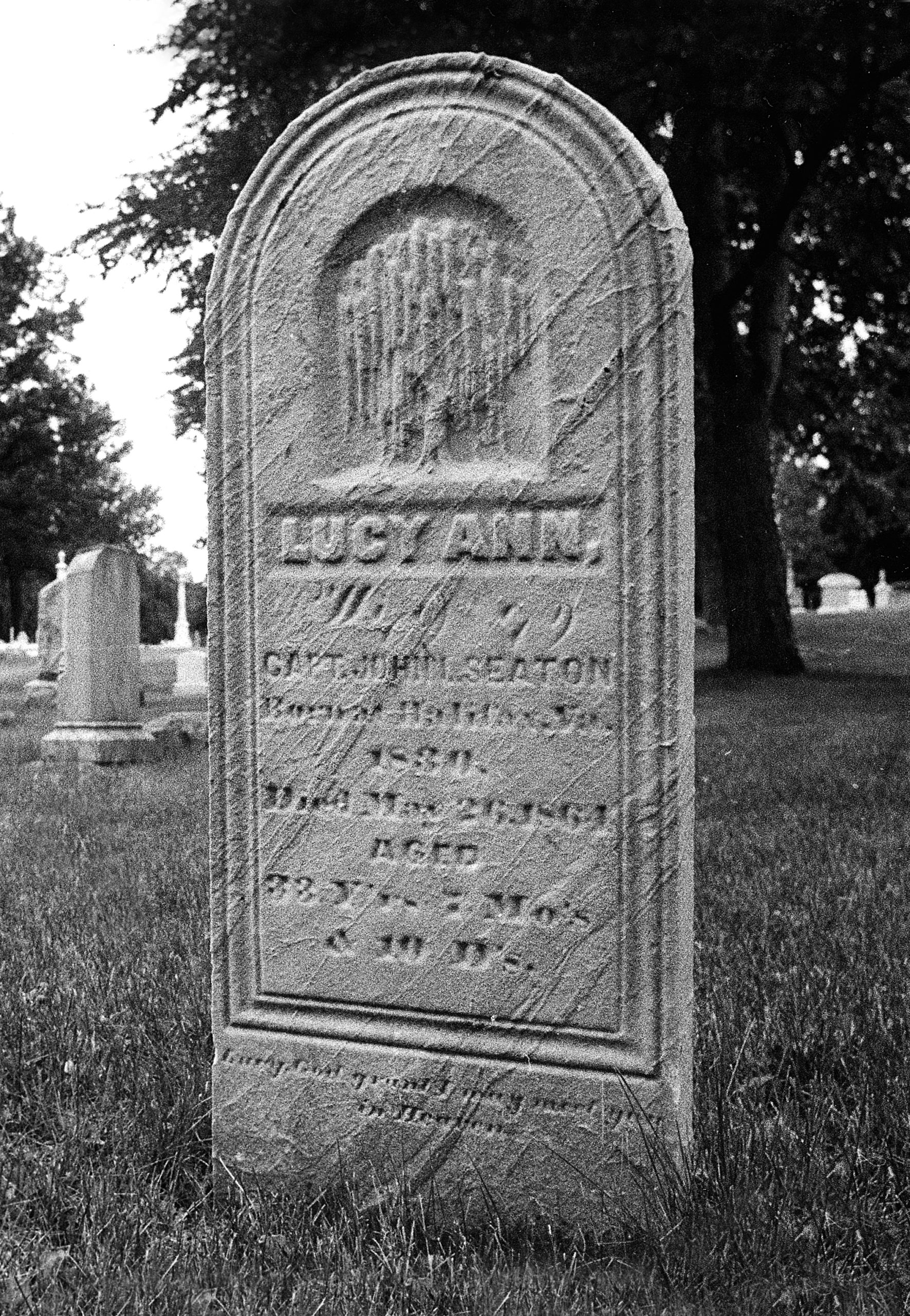
Another first was the construction of a private family mausoleum built in the fall of 1864 for the Honorable Caleb B. Smith, a judge who served as President Lincoln’s Secretary of the Interior. For reasons that are still a mystery, Smith, who had died in January 1864, was not entombed the mausoleum, though it is the final resting place of his son, daughter, and wife. The Crown Hill Foundation recently completed the extensive restoration of the Smith mausoleum.

As we approach our 160th anniversary, this beautiful quote by Marianne W. Tobias, a current Crown Hill Corporator, pianist, musicologist, arts patron, and philanthropist, still rings true: “Solace lies at the heart of Crown Hill. In the middle of a large, noisy, bustling city, this unique institution stands proudly in its mission. The institution speaks quietly, respectfully and powerfully of life’s final transition. With its natural beauty and its caring people, Crown Hill is a magical place with an elegant culture, the highest standards and an enduring strength that seems to cleanse death of morbidity, offering hope, acceptance and peace to all.” (Crown Hill: History |Spirit |Sanctuary, 2013, in celebration of Crown Hill’s 150th anniversary)
